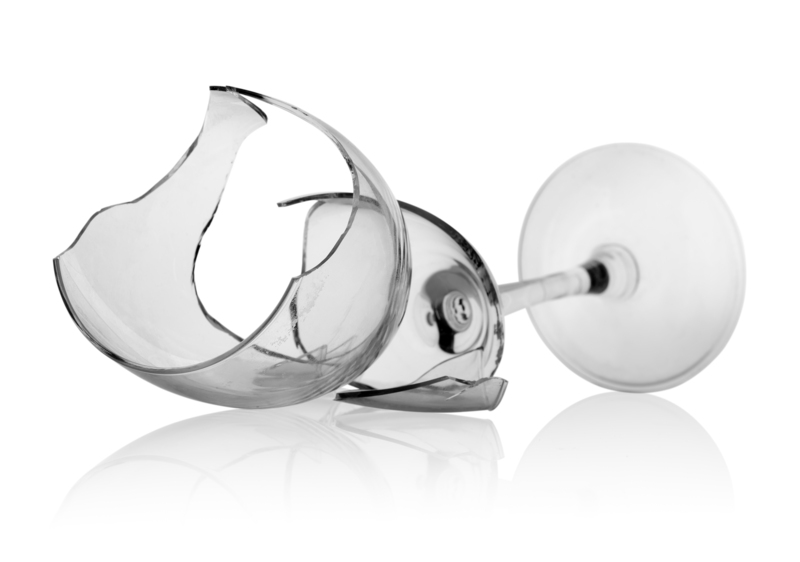Expert Advice for a Smooth Bed and Mattress Moving Experience
Moving your bed and mattress might sound simple, but without the right approach, it can lead to unnecessary hassle, damage, or even injury. Ensuring you have a smooth bed and mattress moving experience requires preparation, the right supplies, and proven tactics. In this comprehensive guide, we share expert advice to help you plan, protect, and move your bedding confidently--whether you're hiring professional movers or going DIY.
Why Proper Bed and Mattress Moving Matters
Many people underestimate the importance of moving bed frames and mattresses correctly. Your bed and mattress are significant investments in your comfort and health. Mishandling them during a move can lead to structural damage, ruined materials, or compromised support. Getting your bed and mattress safely to your new home means you'll enjoy restful sleep from day one.
Common Challenges with Moving Beds and Mattresses
- Awkward sizes and shapes make handling difficult through doors and stairways
- Risk of contamination or stains from contact during transport
- Expensive beds and mattresses could be easily damaged if not moved properly
- High chance of physical strain or injury when lifting heavy mattress types
- Poor packing can void manufacturer's warranties

Essential Preparation for a Smooth Mattress and Bed Move
Before loading up a moving truck, preparation is key for a streamlined bed and mattress relocation experience. Here's what the experts recommend for a safe, organized move:
1. Measure Everything Twice
- Measure your mattress (length, width, and height) and bed frame.
- Take note of corridors, staircases, and doorways in both old and new residences.
- Plan your route in advance to avoid awkward maneuvers or stuck furniture.
Tip: Take photos of your current setup, especially if your bed frame requires disassembly. This helps you reassemble things correctly in your new space.
2. Gather the Right Tools and Supplies
- Heavy-duty moving straps or harnesses for support
- Mattress bags or covers to shield against dirt and tears
- Screwdrivers, Allen keys, or power tools for bed frame disassembly
- Quality packing tape to secure covers and small parts
- Protective blankets and padding for larger items
- Labeled bags or containers for nuts, bolts, and hardware
- Gloves for better grip and safety
3. Disassembling Your Bed Frame
Most beds must be disassembled to move safely and efficiently. Carefully remove any bedding, pillows, and mattress pads first. Take apart the headboard, footboard, slats, and rails, keeping all fasteners in a labeled bag or box.
- Follow manufacturer instructions or photograph each step for reference.
- Keep hardware organized to avoid losing critical screws or brackets.
- Wrap wooden or delicate pieces with moving blankets to prevent scratches and dents.
4. Preparing the Mattress
Use a purpose-made mattress bag or cover for full protection. This shields your mattress from dust, water, and punctures. If moving in the rain or over dirty surfaces, add extra plastic sheeting as a safeguard.
- Do not bend or fold mattresses--especially memory foam or spring types--as this can damage internal structures.
- Secure the bag with tape to prevent shifting during transport.
- Label each mattress by size or room for quick setup in your new home.
Expert Moving Techniques for Beds and Mattresses
Carrying and Loading Mattresses
- Never drag a mattress on the floor. Always lift from the short ends with a partner.
- Bend at the knees, not at the waist, to avoid back injury.
- Use moving straps for heavy or king-size mattresses to distribute weight safely.
- Maneuver slowly through doorways and turns to prevent scrapes.
- If stairs are unavoidable, have one person at each end and take breaks as needed.
Protecting Fragile Bed Frames
- Wrap each disassembled part in furniture blankets or bubble wrap.
- Secure with tape but avoid placing tape directly on wood or painted finishes.
- Use corner protectors for headboards and footboards with intricate designs.
- Store hardware separately in a labeled bag taped to the frame or bed slats.
- Load frames vertically against truck walls to save space and reduce pressure on delicate parts.
Transporting the Mattress Safely
- Lay mattresses flat whenever possible inside the moving truck.
- Standing a mattress on its side might be necessary for space, but never stack heavy items on top.
- Use straps to secure mattresses and prevent sliding during transit.
- Keep away from sharp objects and liquids to avoid unintentional damage.
Professional vs. DIY Mattress and Bed Moving: Pros and Cons
Should you move your mattress and bed yourself, or trust the professionals? Here's an expert breakdown to help you decide which option is best for your situation.
Advantages of Hiring Professional Movers
- Movers have experience with bulky, heavy furniture and know how to navigate tight spaces.
- Professional trucks offer specialized equipment like mattress carriers and hoists.
- Liability insurance covers damage or loss during transit.
- Saves you time and avoids physical exhaustion on moving day.
- Many companies offer temporary storage solutions if your move is delayed.
Benefits & Challenges of DIY Bed and Mattress Moving
- Cost-effective, especially for local or small moves.
- Gives you complete control over packing and handling methods.
- Requires recruiting friends or family for heavy lifting.
- Risk of personal injury or accidental damage is higher without expertise.
- Rental trucks may lack specific moving tools needed for beds and mattresses.
When to Choose Each Approach
- Opt for professional movers if your bed frame is oversized, you have mobility challenges, or are moving long distances.
- DIY is suitable for simple setups and short hauls with plenty of helping hands.
- If your mattress is under warranty, professional movers may be required to avoid voiding coverage.
Special Considerations: Moving Different Mattress Types
Memory Foam Mattresses
- Extremely heavy and floppy--always use at least two people for lifting.
- Never fold, bend, or compress for extended periods.
- Use a thick mattress bag to guard against tearing or punctures.
Innerspring Mattresses
- Hold shape better than memory foam, but avoid heavy stacking to prevent inner coil damage.
- Handle gently to avoid popping springs out of alignment.
Hybrid & Latex Mattresses
- Both types are heavy and resilient--don't try to move solo.
- Always move flat and don't roll or bend them.
- Use appropriate mattress bags and keep away from excessive heat.
Adjustable Beds
- Disconnect all motors and cables, label wiring for easy reassembly.
- Protect remote controls and accessories in clearly marked bags.
- Disassemble the adjustable base if possible; treat as a fragile electronic item.
After the Move: Setting Up and Caring for Your Mattress and Bed
Once everything arrives at your new home, it's tempting to rush the bedroom setup. But proper assembly and care will extend the life of your bed and mattress.
Reassembling Your Bed Frame
- Follow manufacturer instructions and use your photos from disassembly.
- Inspect for missing or damaged parts and replace if needed.
- Ensure all bolts are tightened securely but not overtightened to avoid stripping threads.
- Level the bed frame before placing the mattress back on top.
Mattress Care After a Move
- Allow the mattress to air out for several hours before dressing it.
- Check for tears, stains, or deformities from the move.
- Clean the mattress cover or bag for reuse.
- Confirm mattress orientation (head and foot) is as preferred.
- Rotate or flip older mattresses if recommended by the manufacturer.
Expert Packing Tips for Moving a Bed and Mattress
- Pack bedding and pillows separately in clear, labeled bags for easy access the first night.
- Mark boxes containing bed hardware as "essential" so you can reassemble quickly.
- Wrap box springs in plastic or moving blankets for added protection.
- Use color-coded stickers or tape to match headboard, footboard, and rails to each bedroom.
- Clean and dry your mattress before packing to prevent mildew buildup during transport.

Frequently Asked Questions (FAQs) for an Easy Mattress and Bed Moving Experience
Can I transport a mattress on top of my car?
It's strongly discouraged. Not only can this be illegal or unsafe, but mattresses are difficult to secure and can become airborne, causing serious road hazards. Always use a proper moving vehicle or trailer.
Do moving companies move beds and mattresses?
Yes, almost all full-service movers handle beds and mattresses, but be sure to check if they require items to be bagged or disassembled ahead of time.
How do I move a mattress by myself?
It's possible with a lightweight twin or full-size mattress. Use a rolling cart, slide it on a blanket, or fold (only if allowed by the manufacturer). Most mattress types should be moved with assistance to avoid damaging the product or risking personal injury.
How can I keep my mattress clean during a move?
Always use a waterproof mattress bag, and avoid placing your mattress on dirty or wet surfaces during loading, unloading, and transit.
Conclusion: Move Your Bed and Mattress with Confidence
With the expert guidance above, you can ensure a smooth, damage-free bed and mattress moving experience. Whether relocating across town or cross-country, proper planning and handling will protect your investment and provide comfort from your first night in your new home.
- Measure everything and map your moving plan
- Use high-quality covers and packing materials
- Disassemble bed frames carefully and keep hardware organized
- Lift with your legs, not your back, and ask for help with heavy or floppy mattresses
- Consider professionals if your move is complex or involves premium bedding
For more smart moving advice, tips, and resources, bookmark this page or share with a friend planning their next move. Sleep well--and move well--with the right expert advice for your bed and mattress moving journey!



